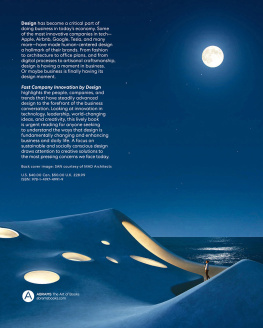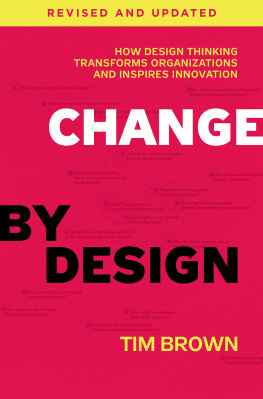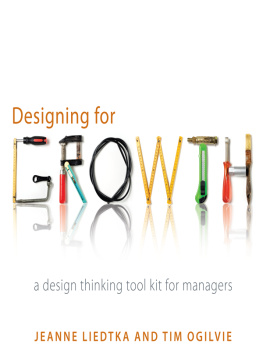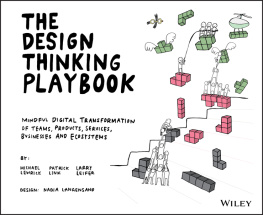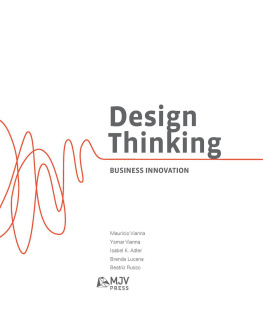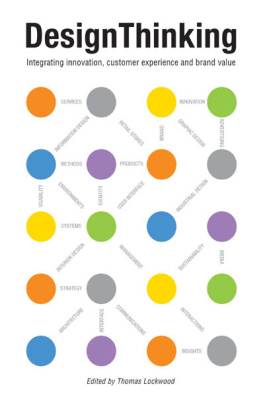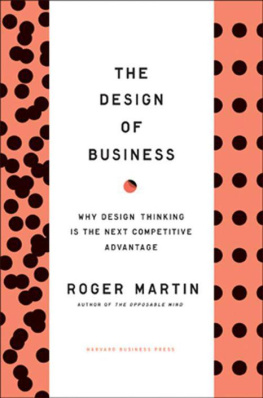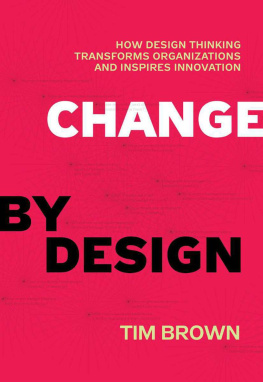The National Museum of African American History and Culture in Washington, D.C.

The GO wheelchair by Layer
contents
by Debbie Millman
by Stephanie Mehta
Foreword
By Debbie Millman
We should not underestimate the crucial importance of leadership and design joining forces. Our global future depends on it. We will either design our way through the deadly challenges of this century, or we wont make it. For our institutionsin truth, for our civilizationto survive and prosper, we must solve extremely complex problems and cope with many bewildering dilemmas. We cannot assume that, following our present path, we will simply evolve toward a better world.
But we can design that better world. That is why designers need to become leaders, and why leaders need to become designers.
Richard Farson, Management by Design, 2000
The year was 1997. Looking back now, it seems like prehistoric times: pre-YouTube, pre-Facebook, 10 years before Apples launch of the iPhone. It was therein a conference room of one of my corporate clientsthat I first saw a publication titled Fast Company. That particular issue featured clever cover art mimicking the iconic Tide laundry detergent. As I inched over, I saw that the headline The Brand Called You took the place of the classic P&G nomenclature. I was intrigued.
I riffled through to Tom Peterss cover story and read his declaration that a new construction of our corporate selves was required in the modern marketplace. As sexy as it seemed at the time, Im not sure anyone understood the gravity of Peterss proclamation. In hindsight, this became the entry point to living our lives publicly punctuated with a constant barrage of personal pixels. And Fast Company had the scoop.
By then the magazine was nearly two years old. I was newly minted in the branding business, and the first sentence of Peterss articleIts a new brand worldbecame my mantra. I adopted Fast Company as my business bible, as it identified and revealed the cultural concepts that have continued to define the zeitgeist. My growing knowledge was further influenced by another early Fast Company writer, Roger Martin, then dean of the Rotman School of Management at the University of Toronto. His pronouncement, Business people dont just need to understand designers betterthey need to become designers, became my rallying cry.
Its hard to imagine that Martin knew the extent to which business would ultimately embrace design, but 25 years later our entire culture is now immersed in a universe fueled by creativity. Behemoth corporations including P&G, Kraft, and Coca-Cola have shown us that scale alone is not nearly enough to thrive in a world where markets are rapidly globalizing and have proven that incremental improvement on its own cant deliver a robust return on investment. Companies such as Apple, Nike, and Target have proven that to succeed, prosper, and make a meaningful difference in todays world the most valuable contribution comes from using the designers foremost competitive weapon: innovation.

Ceramics made of toxic waste by students at the Royal College of Art in London
We are living in a time where business skills and design skills have now converged in ways even Roger Martin couldnt have anticipated. And the stock market agrees: A Design Management Institute study showed that companies that put design at the core of their business strategy outperformed the market by a significant margin. Fifteen rigorously selected companies institutionally using design as a strategic tool beat the S&P by 228% from 2004 to 2014. And in 2018, McKinsey & Company reported that companies using design increased their revenues and total returns to shareholders substantially faster than industry counterparts that did not.
Now, if you are developing a marketing strategy, or streamlining a manufacturing operation, or building a new system for distributionif you work almost anywhere in the world of business todayyou must be engaged in the discipline of design. This bilingual ability has resulted in companies creating superior and elegantly refined products that not only taste different, feel different, and look different; these products are also attempting to make a difference in peoples lives. The biggest, boldest, most innovative products being created today come from companies that respond to compelling needs to redesign, improve, and change the way we livehow we travel, eat, enjoy music, or support causes we believe in.
In addition, for the first time in our history as a modern civilization, design has become democratized. Motivated citizens are designing their own messages and creating brands to signify their beliefs. The Black Lives Matter movement, the Pussyhat Project, and the Extinction Rebellion are non-consumer-based initiatives to redesign society to reflect the type of world like-minded individuals want to live in. The condition of branding is beginning to reflect the condition of our culture.

